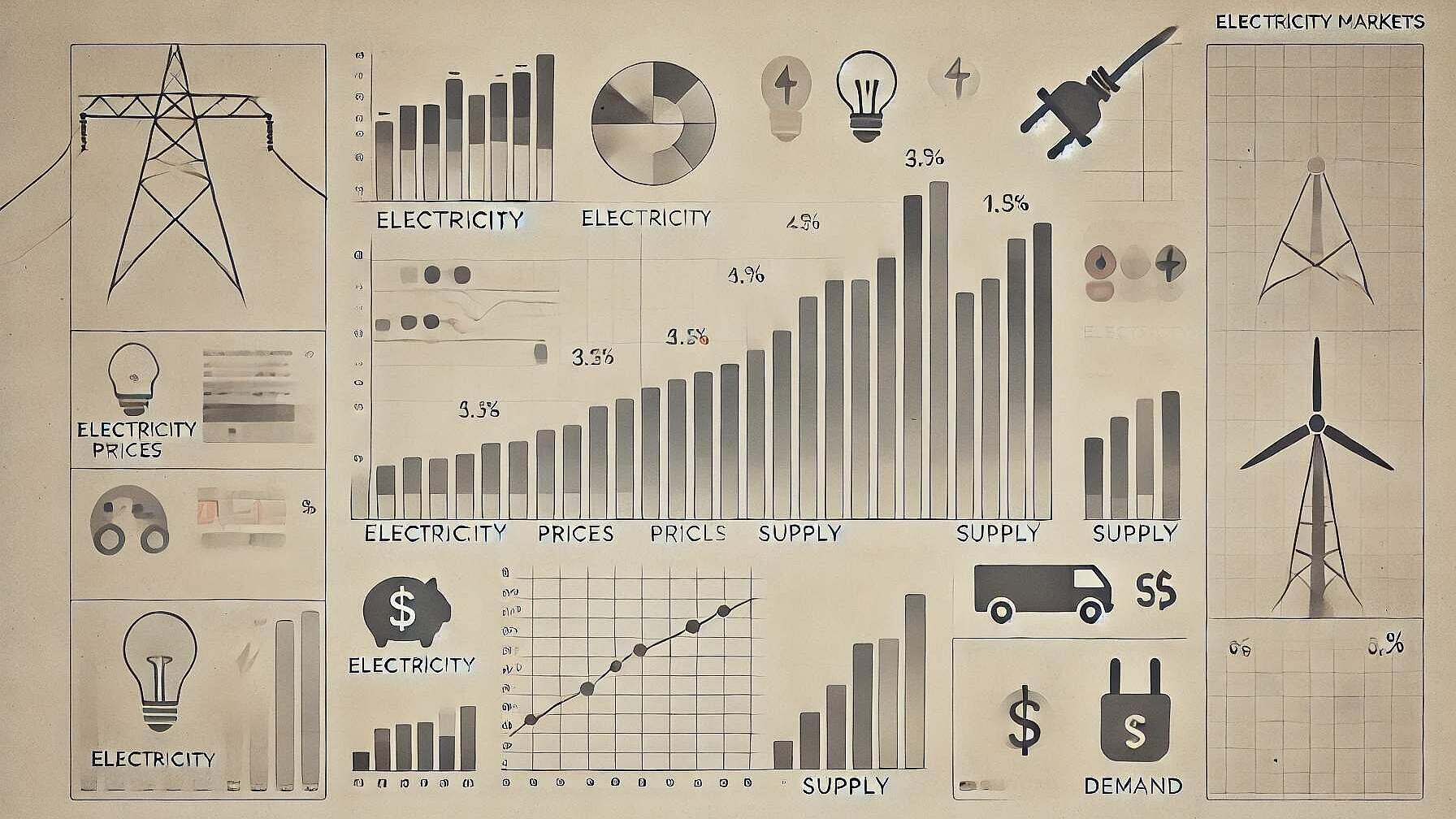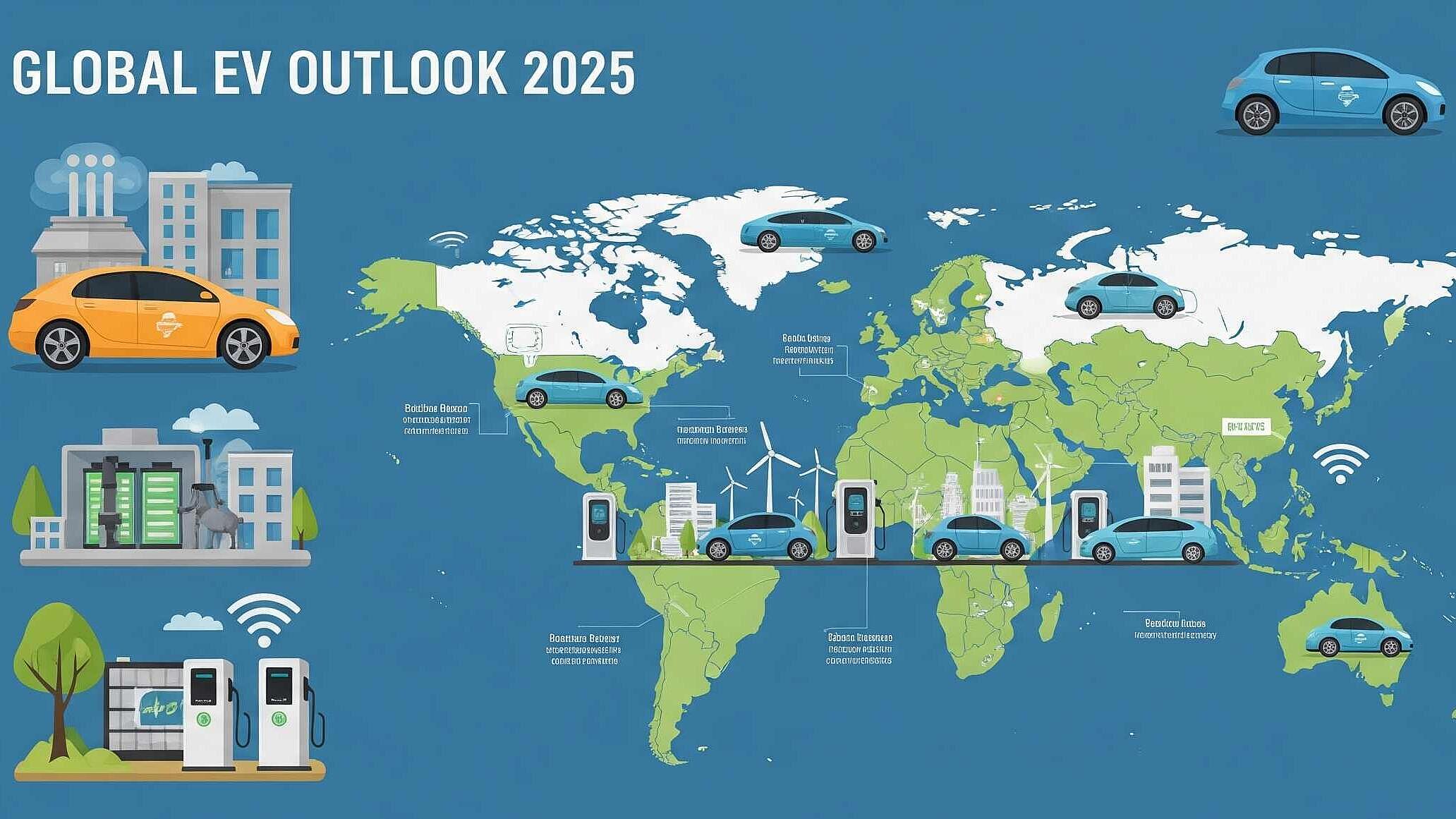 Renewable Energy
Renewable EnergyPowering Ahead: The Global Electricity Landscape Through 2026
Summary
The International Energy Agency's "Electricity 2024" report indicates robust global electricity consumption growth, especially in emerging and developing economies. Developing regions like China and India will significantly increase their electricity use, with the former adding demand equivalent to over half of the EU's usage. The report predicts that renewables and nuclear power will cover all additional electricity demand through 2026, with renewables set to surpass coal as the main generation source. Solar and wind production is expected to significantly rise, especially in countries like India. Nuclear power is witnessing a revival, with China, India, and France leading this growth as part of their energy strategies. Fossil fuels are projected to decline, with coal generation decreasing annually and natural gas growth being marginal.
Power sector CO2 emissions are trending downwards as the electricity mix shifts toward lower carbon sources, foreseen to structurally decline after 2024. By 2026, the CO2 intensity of electricity generation is anticipated to improve significantly.
Regional disparities exist, with Africa falling behind in electricity access and consumption but showing signs of progress. Europe is recovering from an energy crisis, focusing on renewable energy and market reforms. China is addressing the challenge of integrating renewable capacity, and the U.S. faces reliability concerns amid a transition.
Key emerging trends include increased focus on system flexibility, electrification of end uses, the growth in data center electricity demand, the rise of distributed energy resources, and investment in grid infrastructure. These developments demonstrate a considerable transformation in the electricity sector, emphasizing its role in the global energy transition and in fostering economic growth and development.
Open full article
Powering Ahead: The Global Electricity Landscape Through 2026
The global electricity sector stands at a pivotal juncture as it navigates the transition to cleaner energy sources while meeting rising demand. According to the International Energy Agency's latest Electricity 2024 report, worldwide electricity consumption is forecast to grow at a robust pace of 3.4% annually from 2024 to 2026, accelerating from 2.2% growth in 2023. This surge in demand will be predominantly driven by emerging and developing economies, which are expected to account for about 85% of the increase.
China remains the engine of global electricity demand growth, despite some economic rebalancing. The country's electricity consumption is projected to rise by an average of 4.9% annually through 2026, adding demand equivalent to more than half of the European Union's current yearly usage. India is forecast to see even faster growth, with electricity demand expanding by over 6% per year on average. Southeast Asian nations are also poised for strong increases averaging 5% annually.
In contrast, advanced economies are expected to see more modest growth. U.S. electricity demand is forecast to rise by just 1.5% per year on average, while the European Union anticipates annual growth of 2.3% as it recovers from recent declines.
Clean Electricity Taking Center Stage
A landmark shift is on the horizon - low-emissions electricity sources including nuclear and renewables are projected to meet all of the world's additional electricity demand through 2026. Renewables are set to provide over one-third of global electricity generation by early 2025, surpassing coal as the largest source. Solar and wind power will spearhead this growth, with generation from these sources expected to rise by about 25% and 13% per year respectively in countries like India.
Nuclear power is also poised for a resurgence, with global generation forecast to reach a new record high by 2025. Countries like China, India, and France are leading the nuclear expansion, viewing it as a critical component of their energy security and emissions reduction strategies.
The rapid growth of clean electricity is displacing fossil fuel generation in many regions. Coal-fired electricity output is projected to decline by an average of 1.7% annually through 2026, though it remains a major source in countries like India. Natural gas generation is expected to see marginal growth of around 1% per year globally.
Emissions Entering Structural Decline
As the electricity mix shifts decisively towards low-carbon sources, the sector's CO2 emissions appear to be entering a period of structural decline. Global power sector emissions are forecast to fall by over 2% in 2024, followed by further small declines in 2025 and 2026. By 2026, the CO2 intensity of global electricity generation is expected to improve to 400 g CO2/kWh, down from 455 g CO2/kWh in 2023.
"We are seeing a profound transformation of the global electricity landscape," said Fatih Birol, Executive Director of the IEA. "Renewables and nuclear power are set to meet all the growth in global electricity demand over the next three years, marking a turning point in the world's efforts to bring down emissions."
Regional Trends and Challenges
While the global outlook is encouraging, regional disparities persist. Africa continues to lag behind in electricity access and consumption. The continent's per capita electricity use has remained stagnant for over three decades and was just half that of India in 2023. However, there are signs of progress, with African electricity demand forecast to grow by 4% annually from 2024-2026, supported by expanding renewables and natural gas generation.
In Europe, the electricity sector is still grappling with the aftermath of the recent energy crisis. EU electricity demand fell to levels last seen two decades ago in 2023, though a gradual recovery is expected. The region is pushing ahead with ambitious plans to accelerate renewable deployment and reform electricity markets to enhance resilience and affordability.
China faces the challenge of integrating its rapidly expanding renewable capacity while ensuring system stability. The country is exploring innovative solutions like large-scale battery storage and improved demand-side management to address grid integration challenges.
In the United States, the retirement of coal plants and strong growth in renewables are reshaping the electricity mix. However, concerns about winter reliability persist in some regions, highlighting the need for careful planning in the energy transition.
Emerging Trends to Watch
Several key trends are shaping the future of electricity systems globally:
- The rise of flexibility solutions: As variable renewables gain market share, there is growing focus on technologies like battery storage, demand response, and grid-scale batteries to provide system flexibility.
- Electrification of end-uses: The increasing adoption of electric vehicles and heat pumps is becoming a significant driver of electricity demand growth in many countries.
- Data center boom: Electricity consumption from data centers, AI, and cryptocurrencies could potentially double by 2026, adding substantial new demand in some markets.
- Distributed energy resources: Many countries are seeing rapid growth in rooftop solar and other distributed technologies, necessitating new approaches to system planning and operation.
- Focus on grid infrastructure: Recognizing grids as the backbone of the energy transition, many countries are increasing investments in transmission and distribution networks.
As the world moves towards a cleaner electricity future, careful planning and policy support will be crucial to navigate the complexities of this transformation. The STORMING project, an EU initiative developing innovative reactors for converting methane into hydrogen and carbon nanomaterials, exemplifies the kind of breakthrough technologies that could further accelerate the decarbonization of electricity systems.
While challenges remain, the latest forecasts paint a picture of an electricity sector at the forefront of the global energy transition, driving emissions reductions while powering economic growth and development around the world.
Source: www.iea.org/reports/electricity-2024


